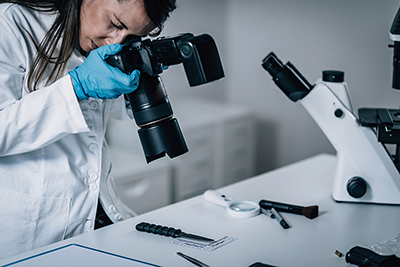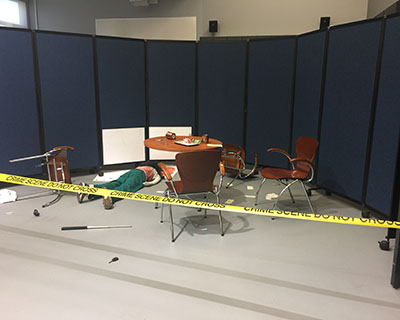The vector-borne hemoflagellate parasite Trypanosoma cruzi infects seven million people globally and causes chronic cardiomyopathy and gastrointestinal diseases. Historically, T. cruzi was endemic to Central and South America, but is now found throughout the southern United States and across 43 countries globally. There are three reports of T. cruzi in wild raccoons and dogs in Oklahoma, but its endemicity in the state is poorly studied. We suspect Mexican free-tailed bats (Tadarida brasiliensis) contribute to the endemicity of T. cruzi in Oklahoma by their annual migration from Central America to North American maternity roosts. During the summer of 2017, we sampled 361 Mexican free-tailed bats at three maternity roosts in Oklahoma for T. cruzi. We collected wing tissues and extracted DNA, amplified target T. cruzi DNA by PCR using the primers TCZ1/TCZ2, and observed amplification by gel electrophoresis. We detected T. cruzi DNA in one juvenile Mexican free-tailed bat resulting in a prevalence of 0.27% in the 361 sampled bats. The positive sample was sequenced at Eton Biosciences, confirmed as T. cruzi, and uploaded to GenBank (MG869732). This finding is the first reported detection of a wild bat naturally infected with T. cruzi in Oklahoma, suggests Mexican free-tailed bats can contribute to T. cruzi endemicity via migration between endemic foci, and provides insight on the endemicity of T. cruzi in underrepresented endemic areas. To better understand the potential impact of global climate change on the future epidemiology of T. cruzi in Oklahoma, we used the program MaxEnt to develop an ecological niche model for T. cruzi and five widespread Triatoma vectors based on 19 bioclimatic variables and 546 published localities within the United States. We modeled regions of current potential T. cruzi and Triatoma distribution, and regions projected to have suitable climatic conditions under a Representative Concentration Pathway (RCP 8.5) scenario by 2070. Regions with potential suitable climatic conditions for T. cruzi, T. indictiva, T. lecticularia, T. protracta, and T. sanguisuga are predicted to increase within the United States and Oklahoma by 2070. Regions with potential suitable climatic conditions for T. gerstaeckeri are predicted to increase within the United States but not in Oklahoma by 2070. Our findings agree with previous literature and confirm that climate change will influence the expansion of T. cruzi and important Triatoma vectors in Oklahoma and the United States.
Matthew D. Nichols – 2018


